Now that I’ve fully immersed myself in the Aputure ecosystem and recently tested their Aputure Light Octadome 120, I’m genuinely impressed by its construction quality.
I’ve been contemplating investing in a strip softbox for some time now, and I’ve decided to go for this Aputure model, which falls somewhere between budget-friendly and high-end options. In this review, we’ll explore how this light modifier performs.
Why getting a strip softbox?
A strip softbox is a widely favored tool in studio photography for its capacity to shape and diffuse light effectively.
Its elongated yet narrow design enables it to produce ideal accent light, more precisely a rim light that contour the body of the subject.
While achieving similar results is possible with a fresnel lens and barn doors, the primary distinction lies in the softness or diffusion of the light.
Just like any other softbox, the strip shape has the capability to produce uniform and gentle lighting, offering your images a visually appealing soft appearance.
What are the different type of back lights?
A rim light serves as an accent light typically employed to distinguish the subject from the background, enhancing its prominence and lending a sense of depth to the frame. Here are the main types of back lights :
Rim light
A rim light typically illuminates and defines the entire subject from one edge to the other, providing a complete outline of the subject’s silhouette.
Edge light
An edge light employs a similar technique, but it selectively outlines just one edge of the subject, like the face, rather than encompassing the entire figure, such as the back of the head. Imagine a side view of a face with light highlighting only its facial features.
Hair light
As the name implies, a hair light is directed specifically to illuminate a section of the hair, adding depth and detail to the image.
Typically, this method effectively accentuates the subject’s hair, enhancing its texture, which is particularly crucial for adding character.
This approach is commonly effective as overhead lighting is prevalent indoors and outdoors, courtesy of natural sunlight.
This is particularly crucial for individuals with dark hair in dimly lit surroundings, where the complete shape of the subject’s head might otherwise be difficult to discern.
Kicker light
A kicker light is a targeted illumination that enhances the dimensionality of a subject. For instance, if your key light is positioned on the left side of the face, adding a patch of light to the right side of the neck and the back of the head will contribute to crafting a three-dimensional image.
The Aputure Light Box 30120
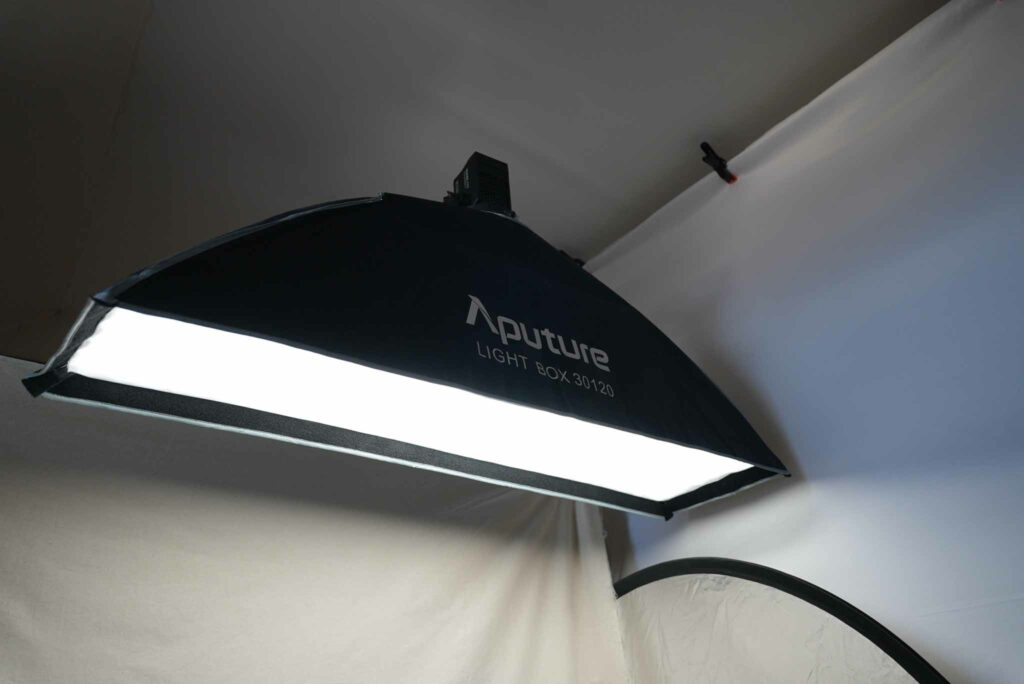
The model 30120 refers to the dimensions of the softbox, which is a rectangular shape measuring 30 centimeters in width and 120 centimeters in length.
Like previously viewed, this shape is grade to create a rim of light around the subject when he is standing or sittting.
As mentioned earlier, this shape is ideal for producing a rim of light around the subject whether they are standing or sitting.
It is commonly employed in product photography, especially for vertically oriented objects such as bottles.
In addition to functioning as a hair light, the strip box can also serve as a rim light, contouring the shoulders without casting light onto the forehead, unlike an octabox or parabolic softbox would.
Whats in the box?
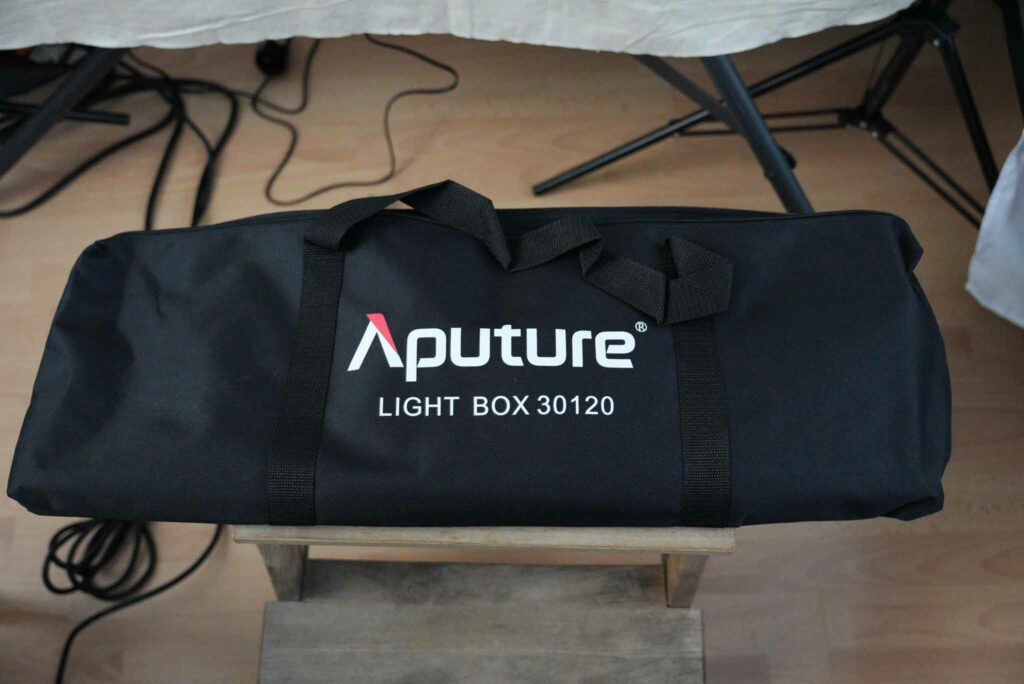
Like most softboxes it comes with a bag and a bunch of accessories. Aputure is known to give a Grid with their softbox compared to Nanlite who sold them separately. Here’s what inside the bag :
- 4 rods
- speed ring equipped with a detachable Bowens mount adapted to it
- 2 sheets of diffusion (usually 1 stop and half a stop)
- 1 inner baffle to scatter le light
- 1 grid
- 1 notice
The build quality
The softbox
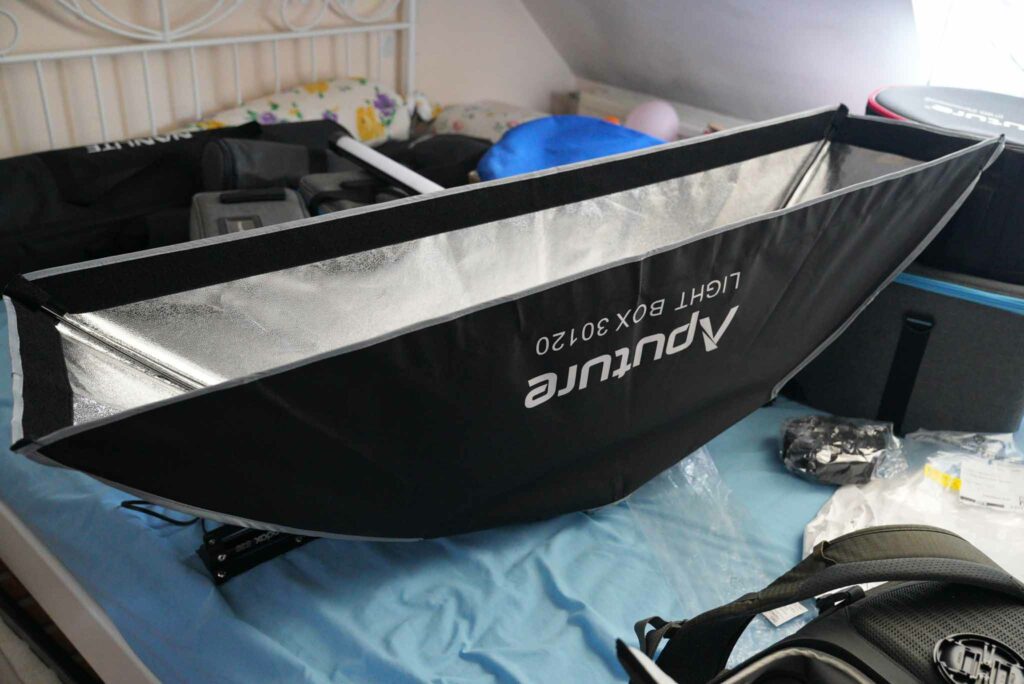
All items are securely packed, and the quality is exceptional. This softbox is built to endure, making it suitable for equipment rental businesses as well.
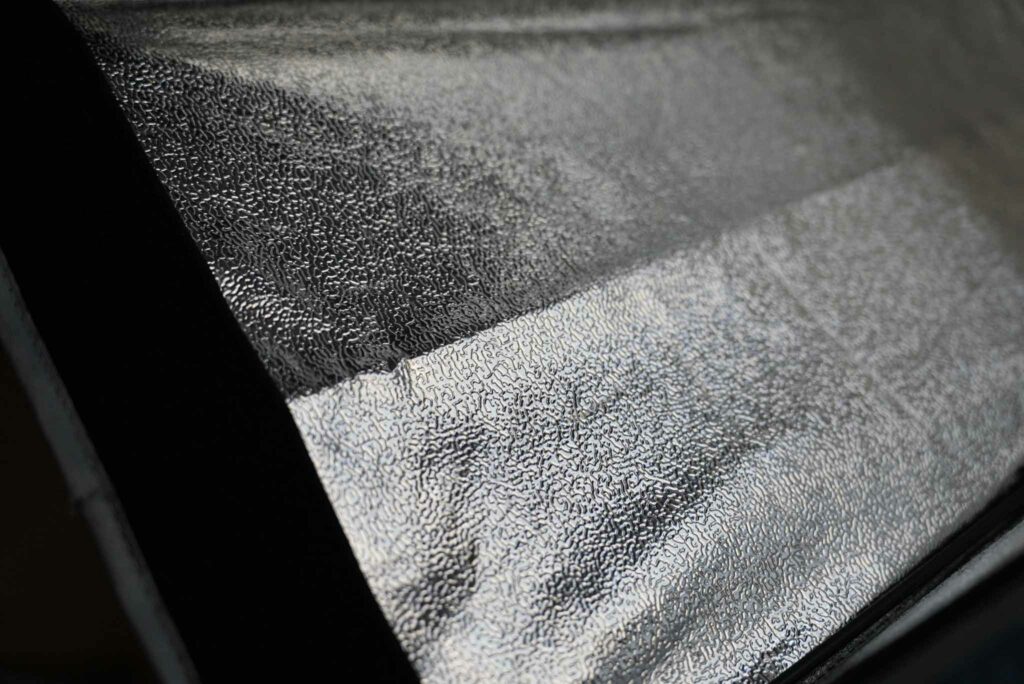
I’m genuinely impressed by the exterior fabric, which appears highly durable and scratch-resistant, as well as the reflective material inside, which, in my opinion, surpasses that found in parabolic softboxes. They are the same as the Light OctaDome 120 and that’s exactly why I chose to go with Aputure.
The inner baffle
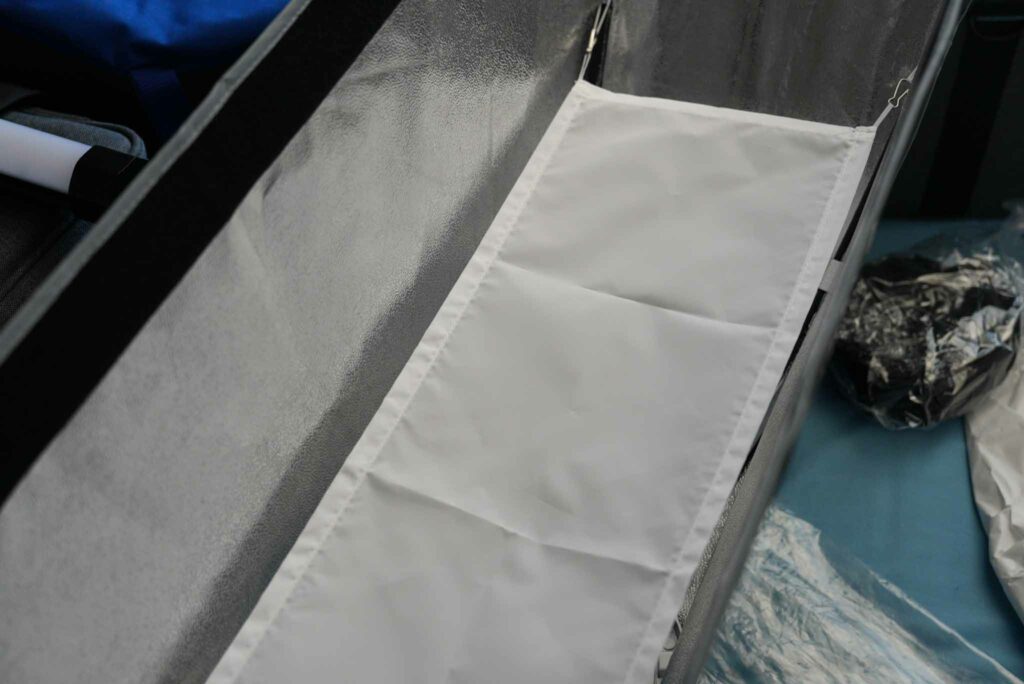
Interestingly the inner baffle is made out of elastic material with metal clip or carabiner. Be careful since metal can cut tissue with ease. These clip aren’t easy to manipulate but are at least more solid than plastic ones.
The diffusion sheets
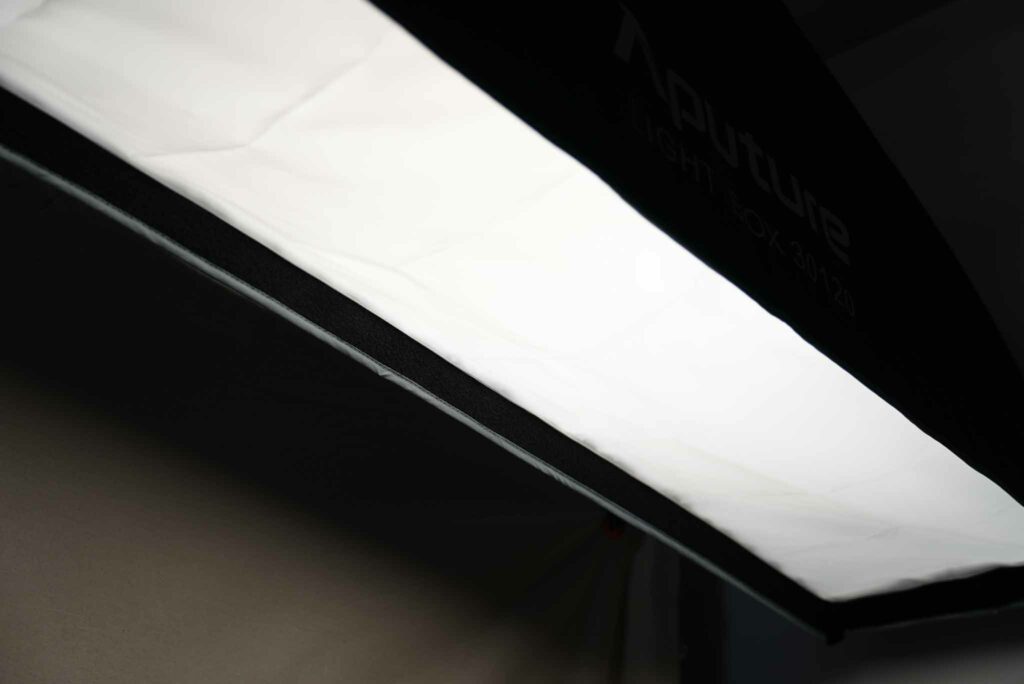
The outside layer of diffusion isn’t made of grid clothes like the one in the Nanlite Forza Softbox SB-PR-90-Q, but it does a good job diffusing the light without changing too much the Kelvin temperature.
The speed ring
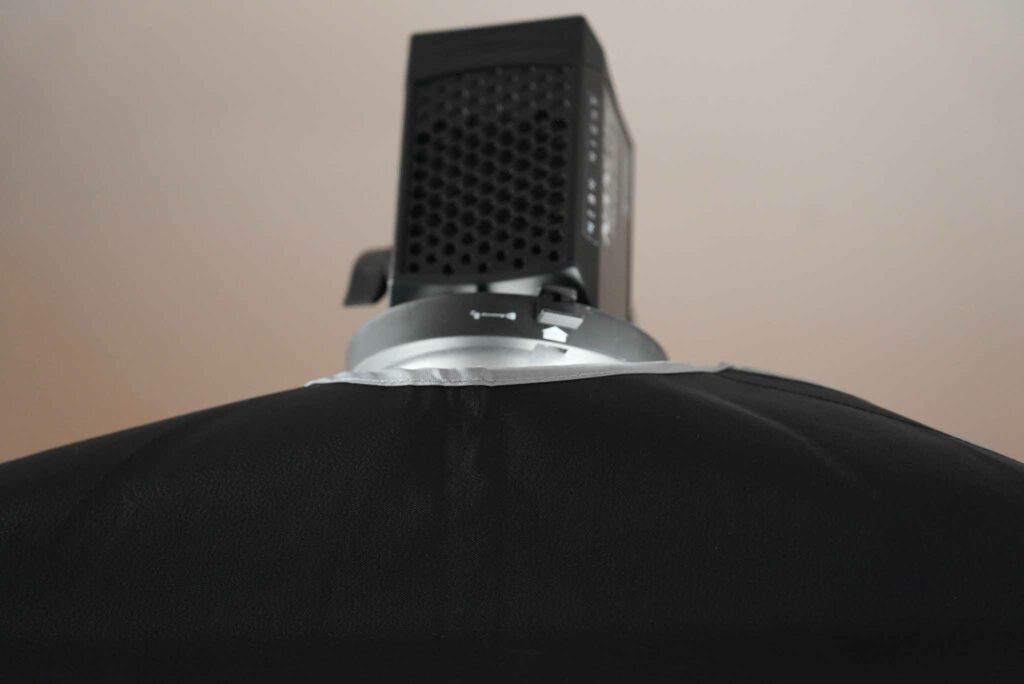
The speed ring is identical to the one used in the OctaDome, robust and slightly heavy. Made entirely of metal, it can rotate on its axis with the Bowens adapter, though securing it onto the Bowens mount can be a bit challenging.
The grid
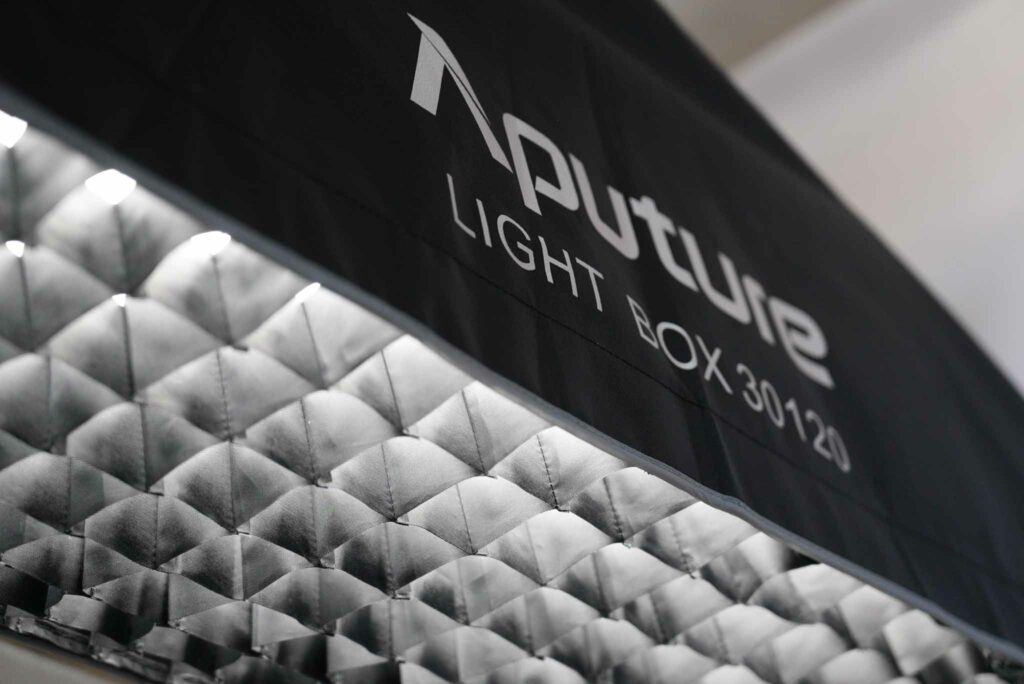
Like always Aputure doesn’t disappoint when it comes to grid which much more square than its Nanlite counterparts and therefore much more control in the spill.
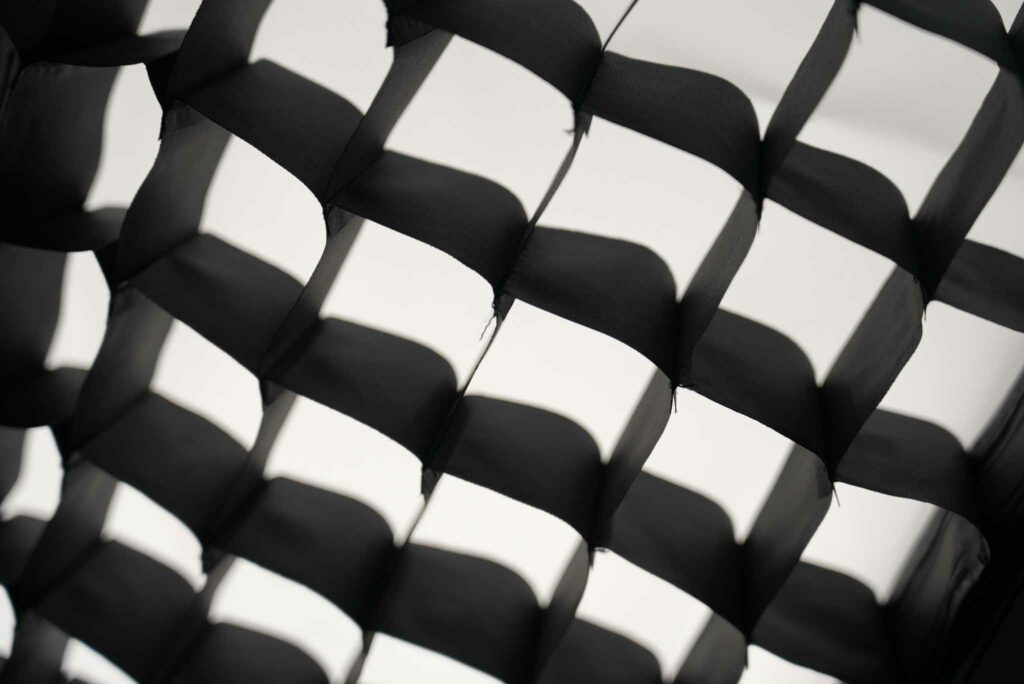
The OctaDome and Strip Softbox, when compared to the Parabolic, feature sides and angles that are detached from each other. I appreciate this ergonomic detail.
The stitching
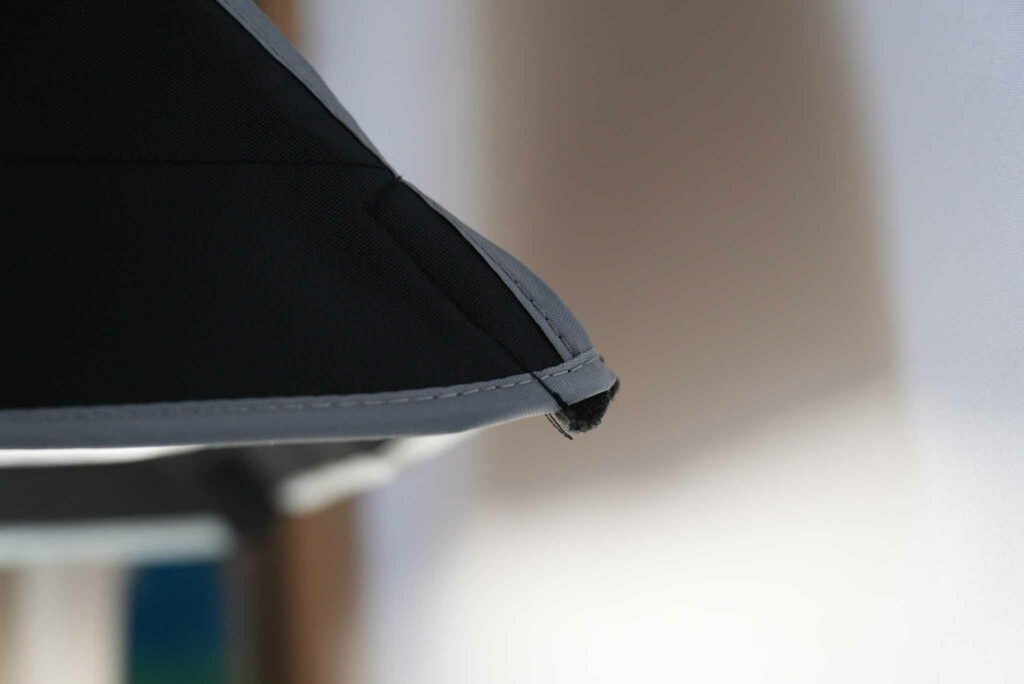
Even if the stitching isn’t flawless, it’s engineered to withstand considerable forces. While assembling my OctaDome 120, I was pleasantly surprised by the durability of the stitching, which strongly resembles that of pools and tents.
The setup
The speed ring features four arrows to assist with rod setup. I’ve found this softbox much easier to set up compared to the Octadome. I believe most individuals will have no difficulty unfolding and assembling this softbox, although having some quick-clipping rods would have been a nice addition.
The light quality
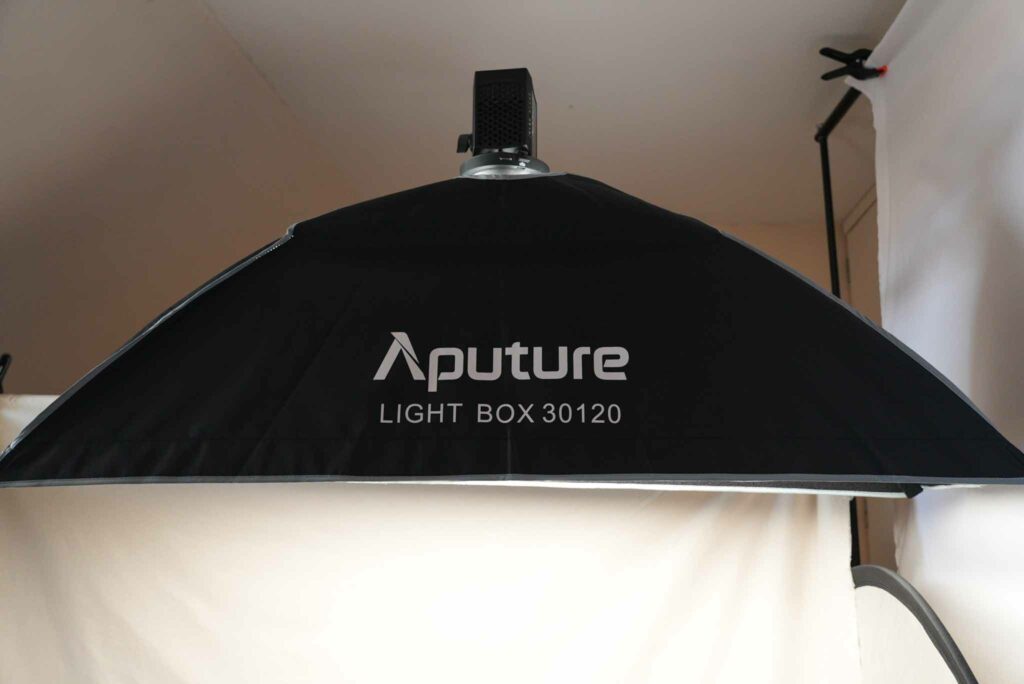
When using only the light from the stripbox, I found the color rendition to be identical to that of the OctaDome 120, which is expected as both use the same diffusion fabric.
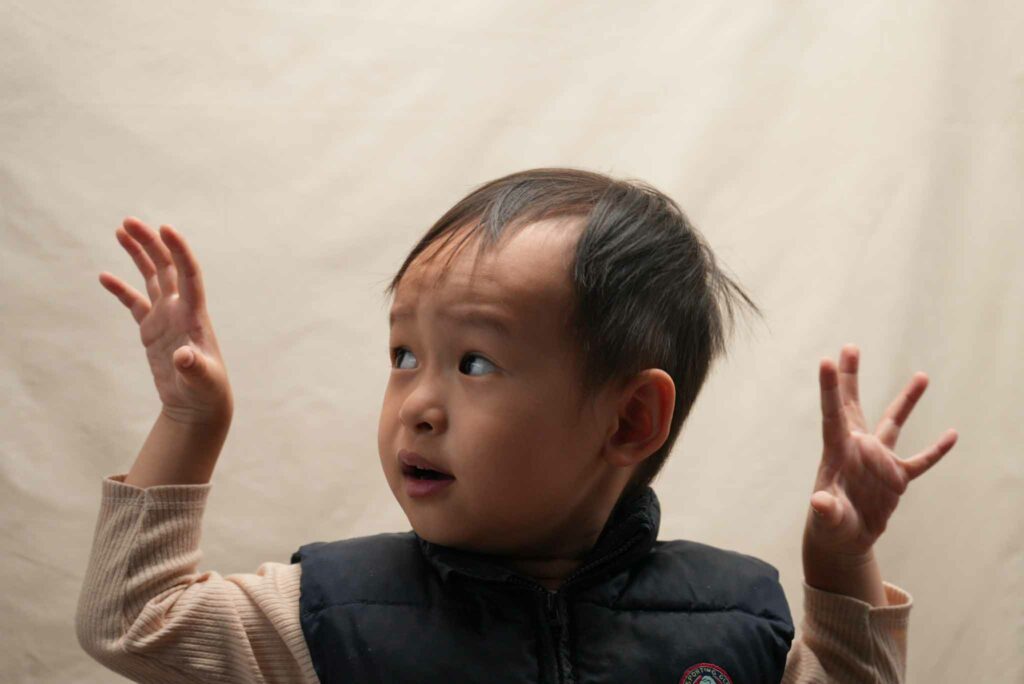
The only variation in light quality is that this box doesn’t wrap around as much and is quite directional. You’ll still have a spill if you don’t use the grid.
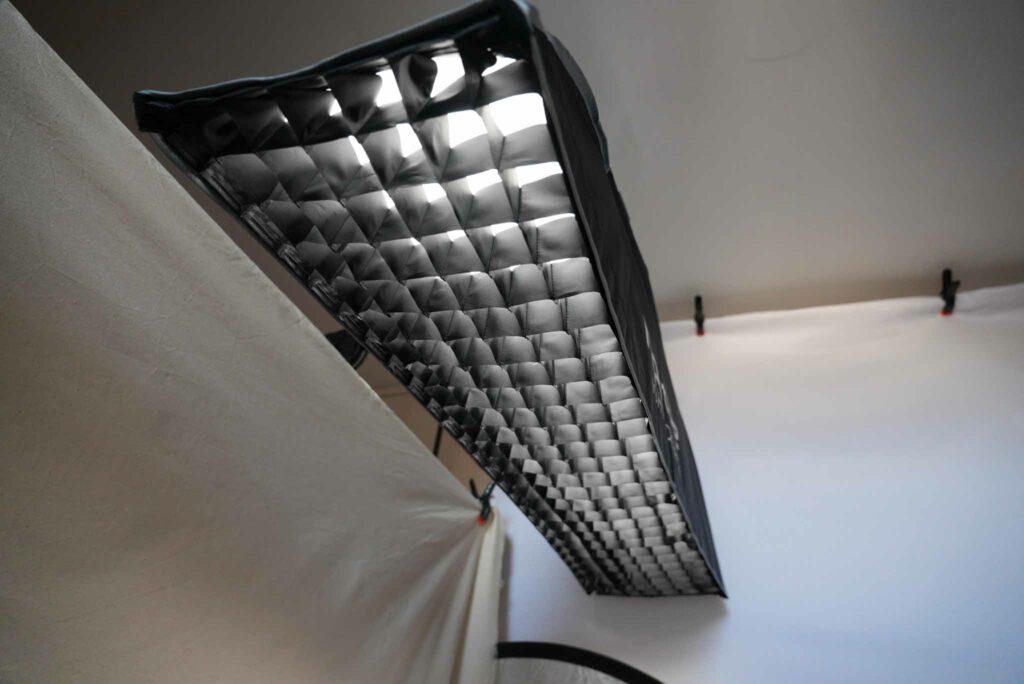
When using the grid, you’ll certainly lose some light. Employing the inner baffle and grid with a Nanlite Forza 60B II, it was evident that the light output was insufficient. I would suggest opting for at least a Nanlite Forza 150B or an Amaran 200X S, both of which are lightweight enough to be easily positioned overhead.
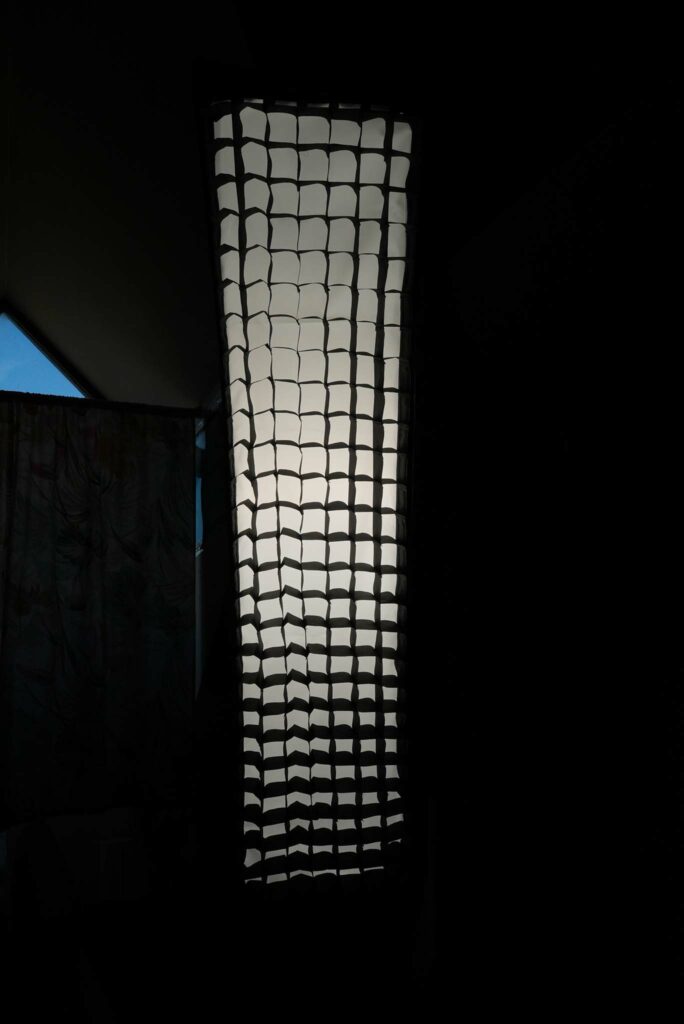
Despite employing the inner baffle, the softbox still struggles to achieve uniform lighting from edge to edge. This issue likely stems from the design and dimensions of the strip softbox.
It’s worth noting that in this particular instance, I’m using a Nanlite Forza 500B II. I plan to conduct additional tests with the Aputure LS 600d Pro in the near future.
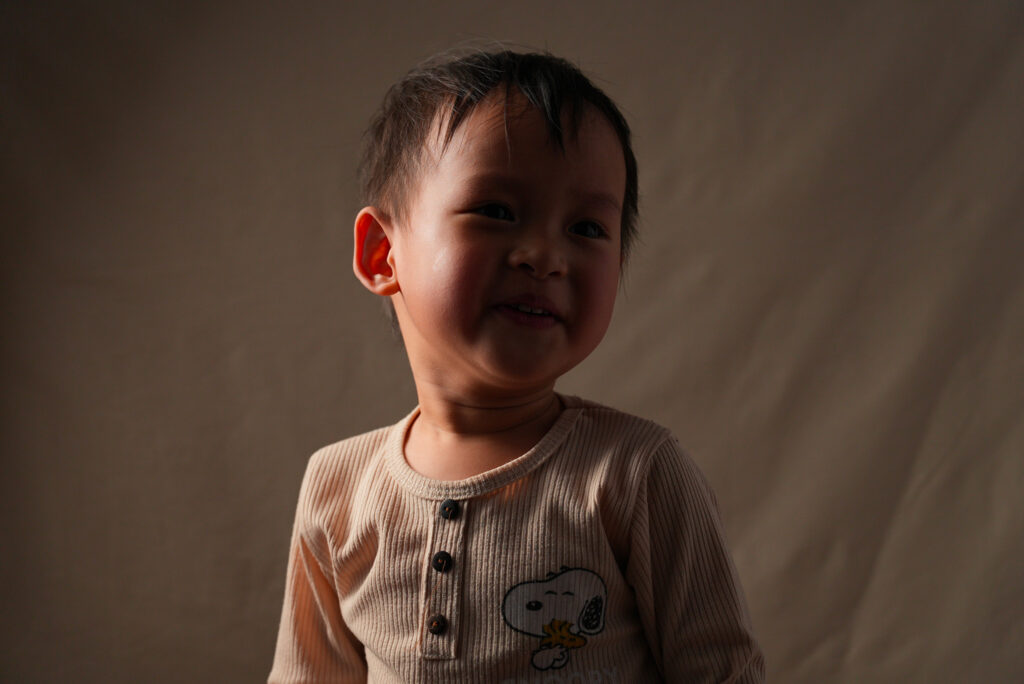
Apart from this limitation, the softbox effectively fulfills its primary function, which is to provide a narrow beam of light to highlight only a specific strip of the subject.
In contrast to other types of softboxes, strip softboxes offer significantly greater precision and ease of control. I would highly recommend one to anyone seeking to learn more about illuminating a subject effectively.
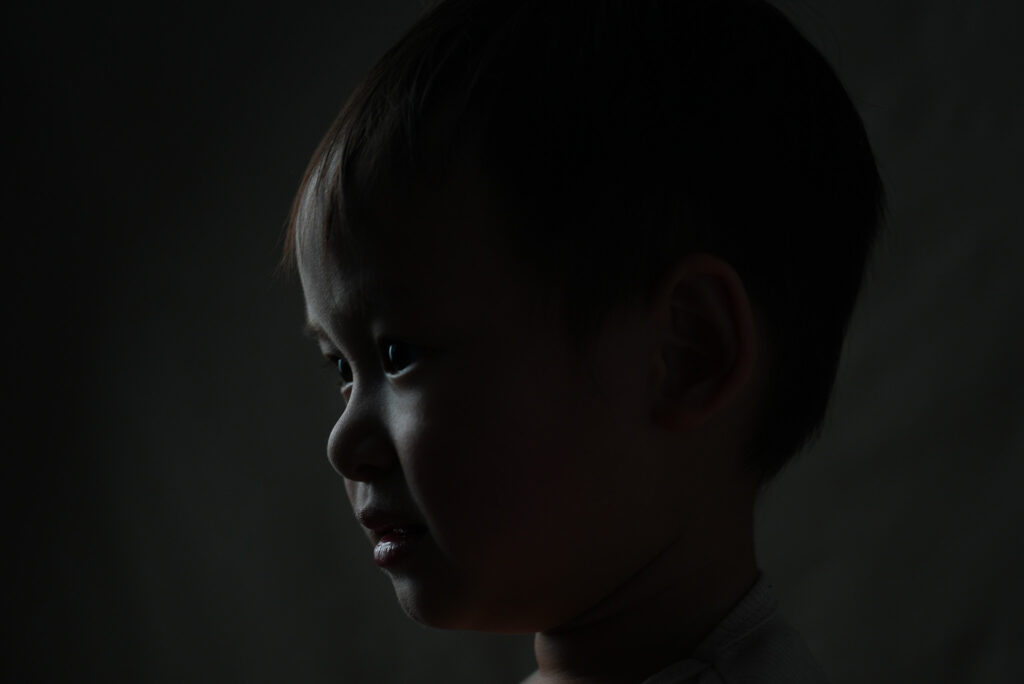
One of the primary uses I sought in a strip softbox was to replicate this particular type of edge light. I experimented with various other tools, such as the Nanlite Pavotube II 15X, whose barn doors cost exactly the same as this softbox.
I also experimented with the Nanlite Projection Attachment PJ-FZ60-19, equipped with blades. However, the resulting light patch wasn’t sufficiently soft for the aesthetic I aimed to achieve.
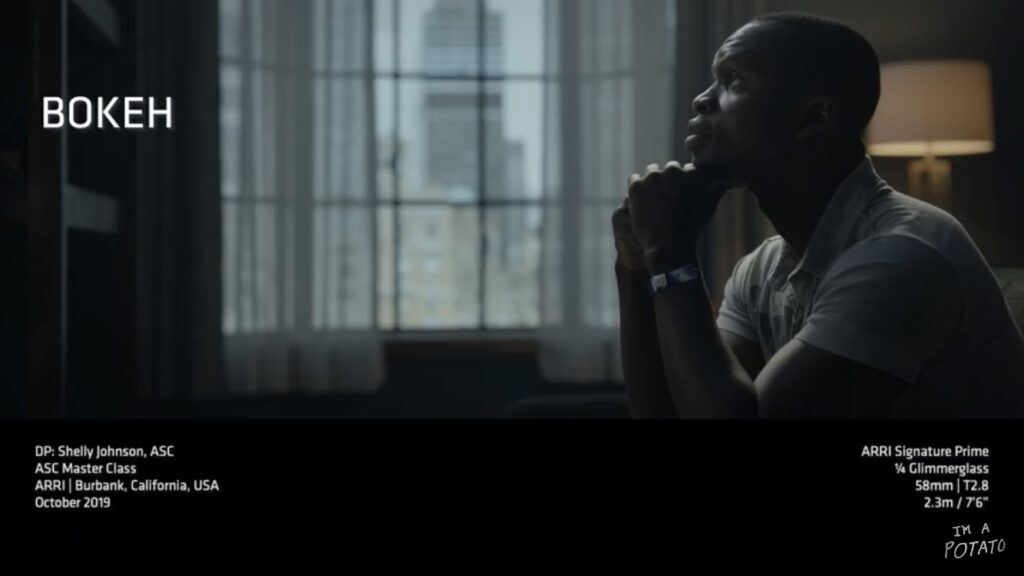
This tool proves invaluable for creating a edge light like this while maintaining the highlights in the windows.
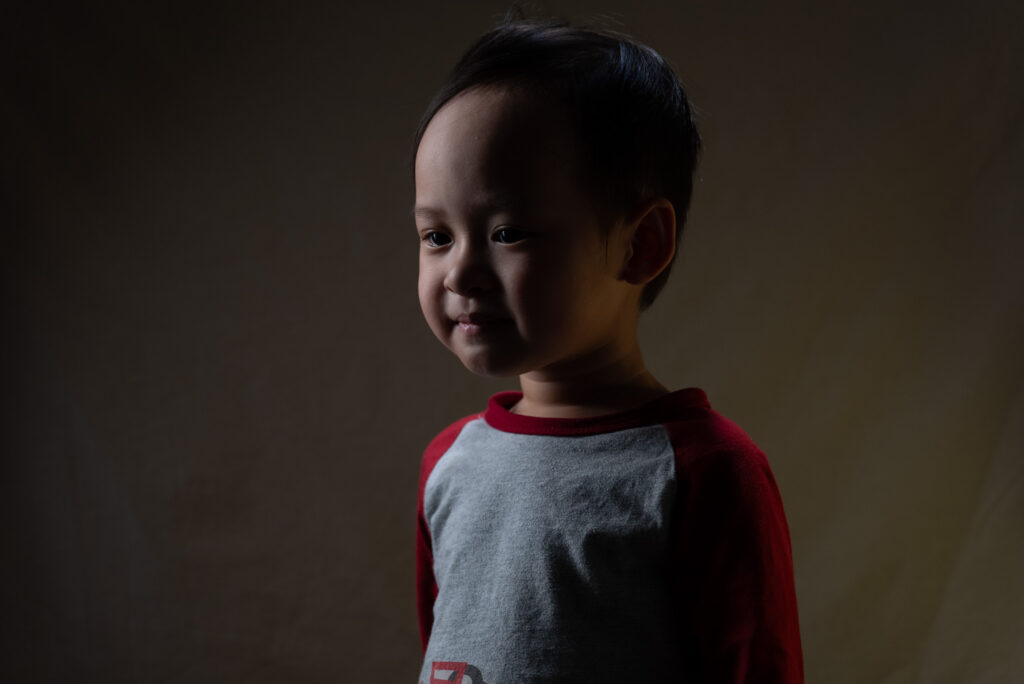
I believe adding a second strip softbox would certainly enhance your toolkit for capturing images where the backlight of a practical lamp also outlines the character’s silhouette.
The competition
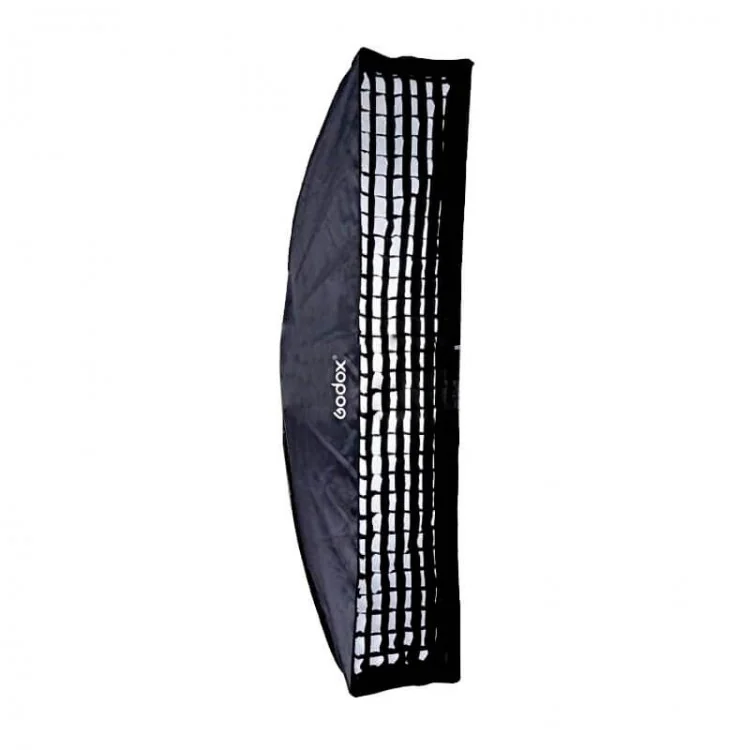
Such as softbox can be found at cheaper prices. For example the Godox SB-FW-30120 share the same dimensions and is sold under 30 euros compared to the 70 euros for the Aputure.
I’m unsure if this light is suitable for continuous and powerful LED lights like the Aputure 600D Pro. I believe the Godox softbox is designed for strobe use and may not withstand prolonged heat, posing a fire hazard on set.
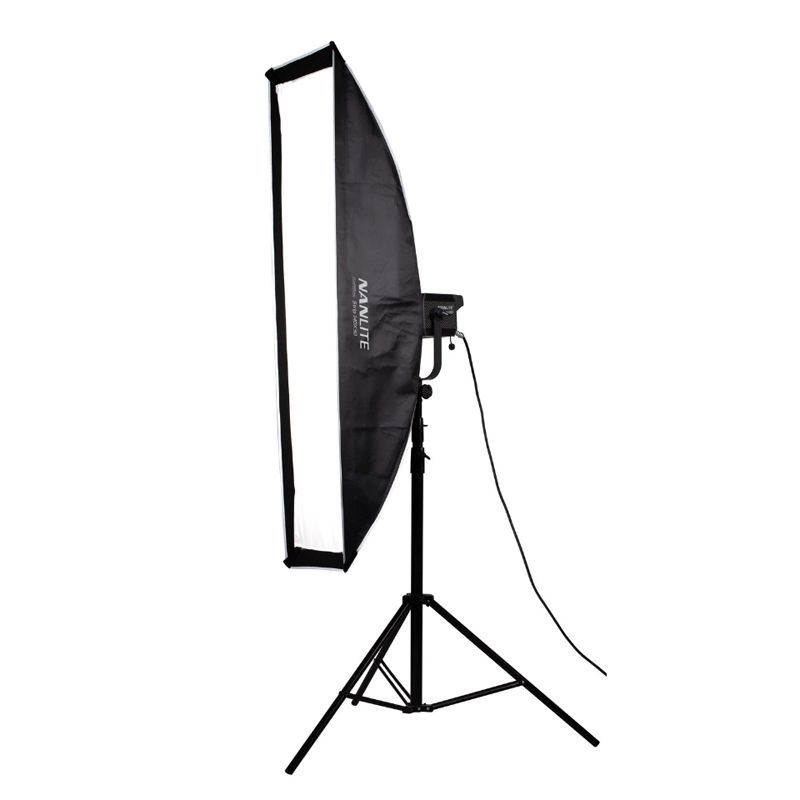
Nanlite also offers a 30×140 softbox priced at 60 euros including tax. However, the main drawback is that the grid is sold separately for 30 euros, and their grid provides less coverage and more spill. Thus, paying a total of 90 euros including tax for a less effective product is somewhat disappointing.
Verdict
8.0 out of 10.
The Aputure Light Box 30120 is undoubtedly a tool that every videographer should experiment with, at least once, to produce accent lighting. It greatly simplifies the process of achieving both softness and shaping in your lighting.
This softbox has a multitude of applications. Vertically, it produces hard light, while horizontally, it produces soft light. Such a softbox is ideal for lighting just the face, for instance, and creating dramatic portraits.
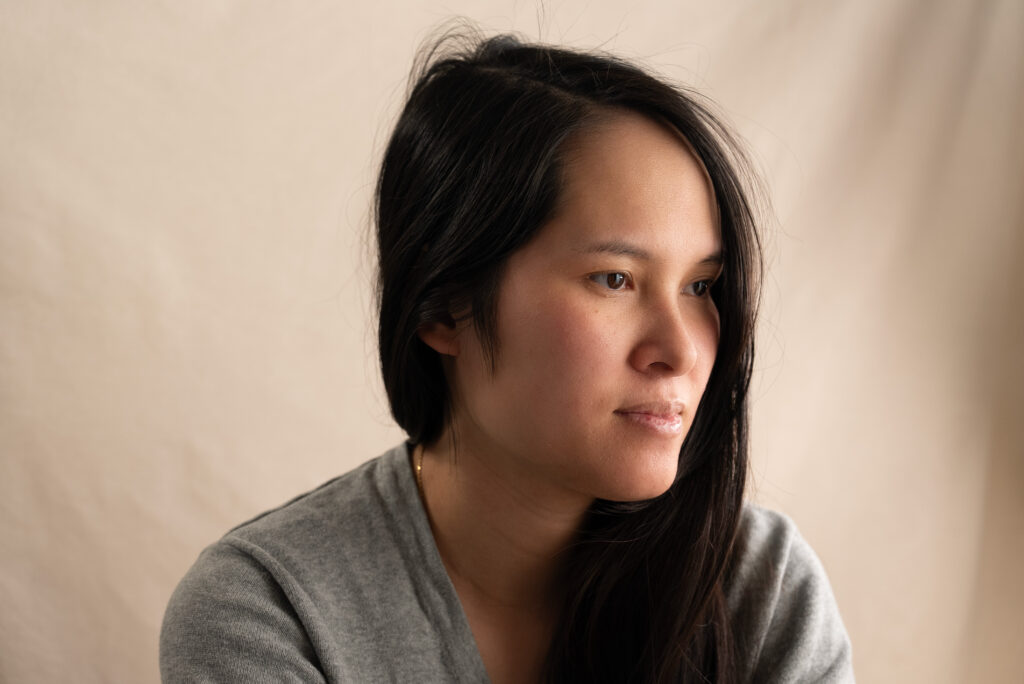
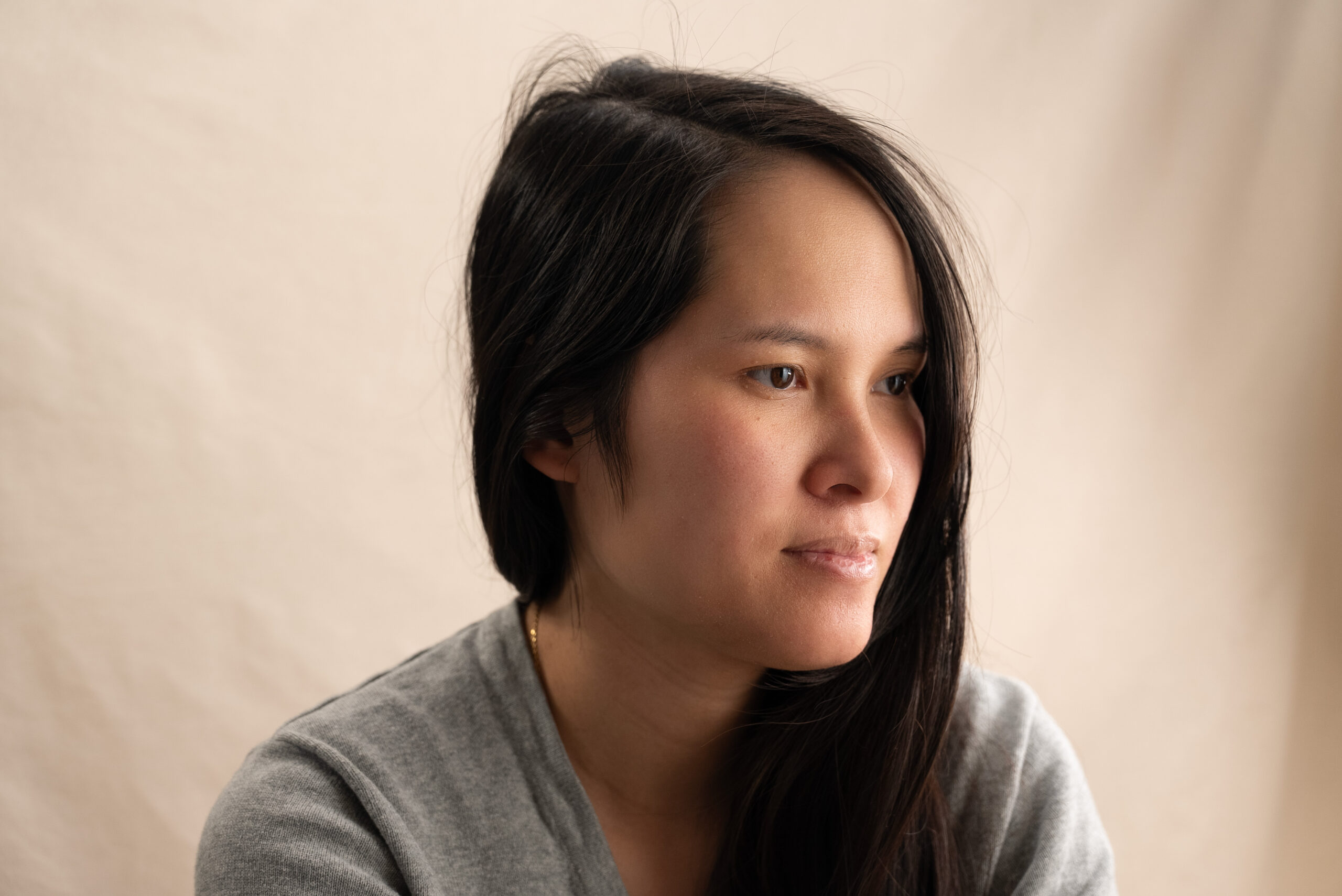
Aputure typically offers better value than most competitors in terms of accessories, providing superior fabric, accessories such as grids, and overall construction. The quality is exceptionally high, with a price that is very reasonable.
For these reasons I think this softbox is a must for anyone who wish to get some beautiful rim, edge or hair lights.
Information
Aputure Light Box 30120
Official website: https://www.aputure.com
Official page: https://www.aputure.com/products/light-box-30×120/
Our video production: https://www.neonnight.fr/en/


GIPHY App Key not set. Please check settings